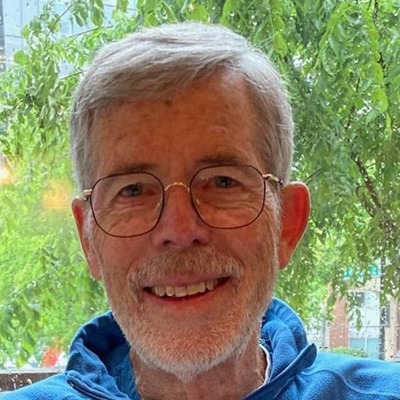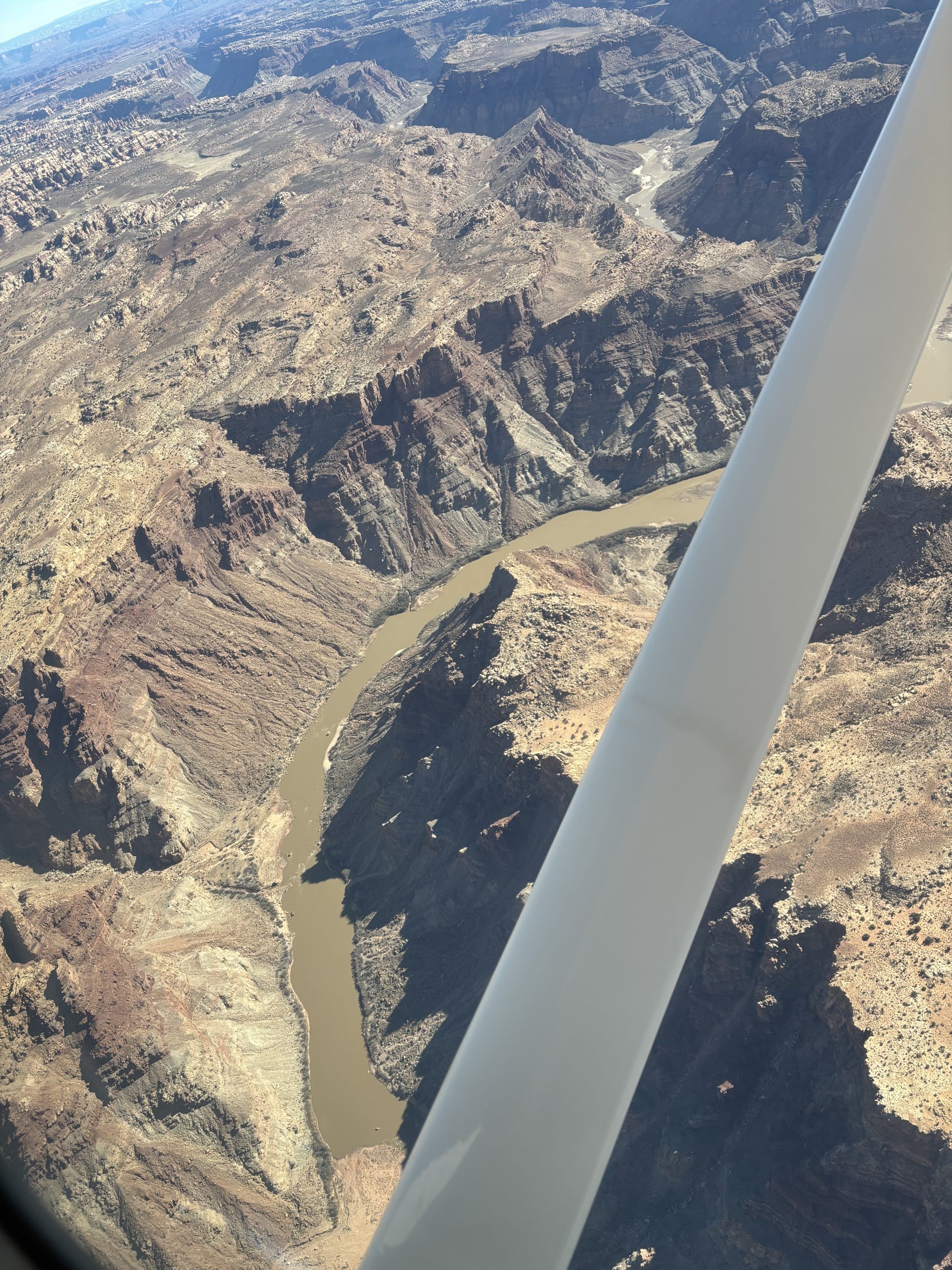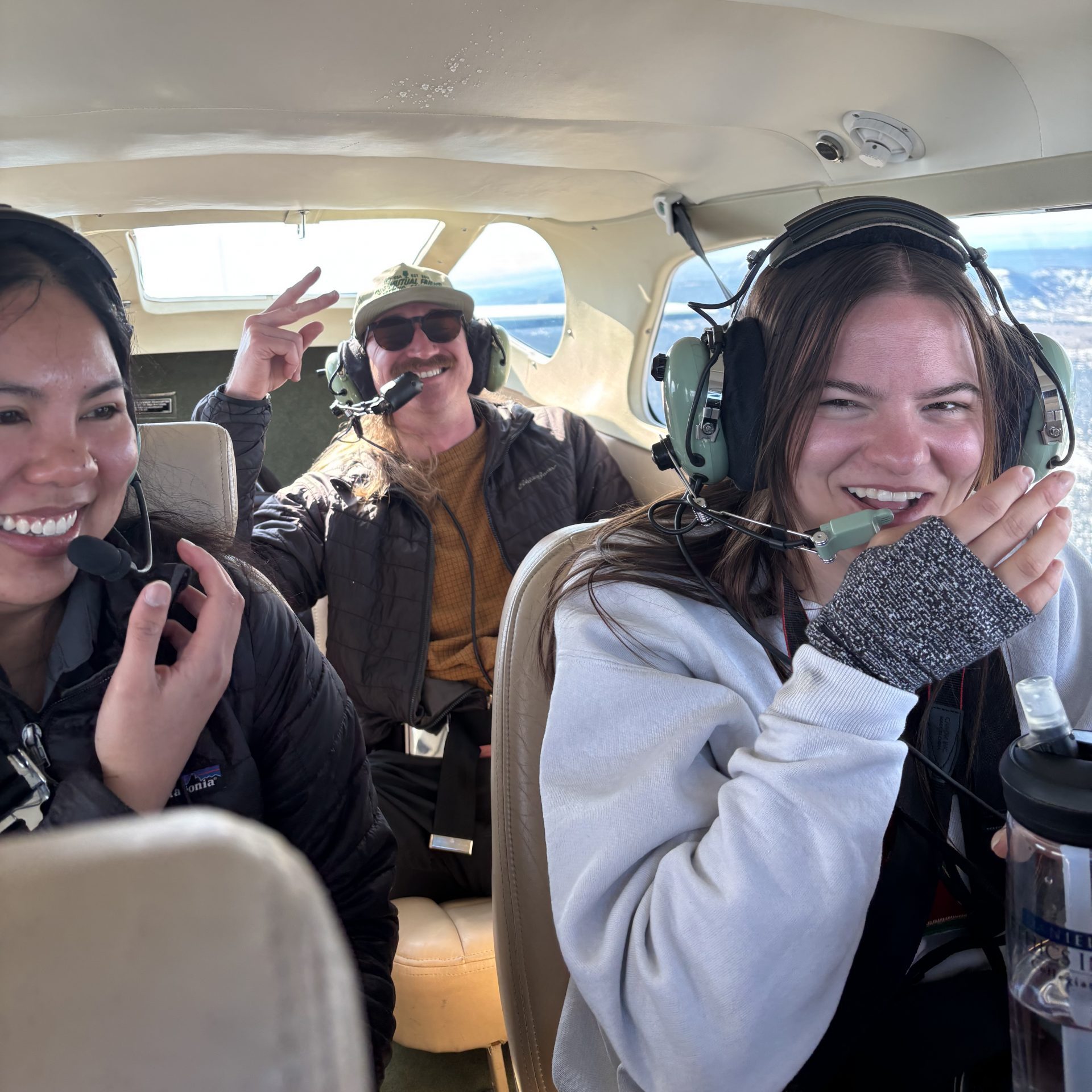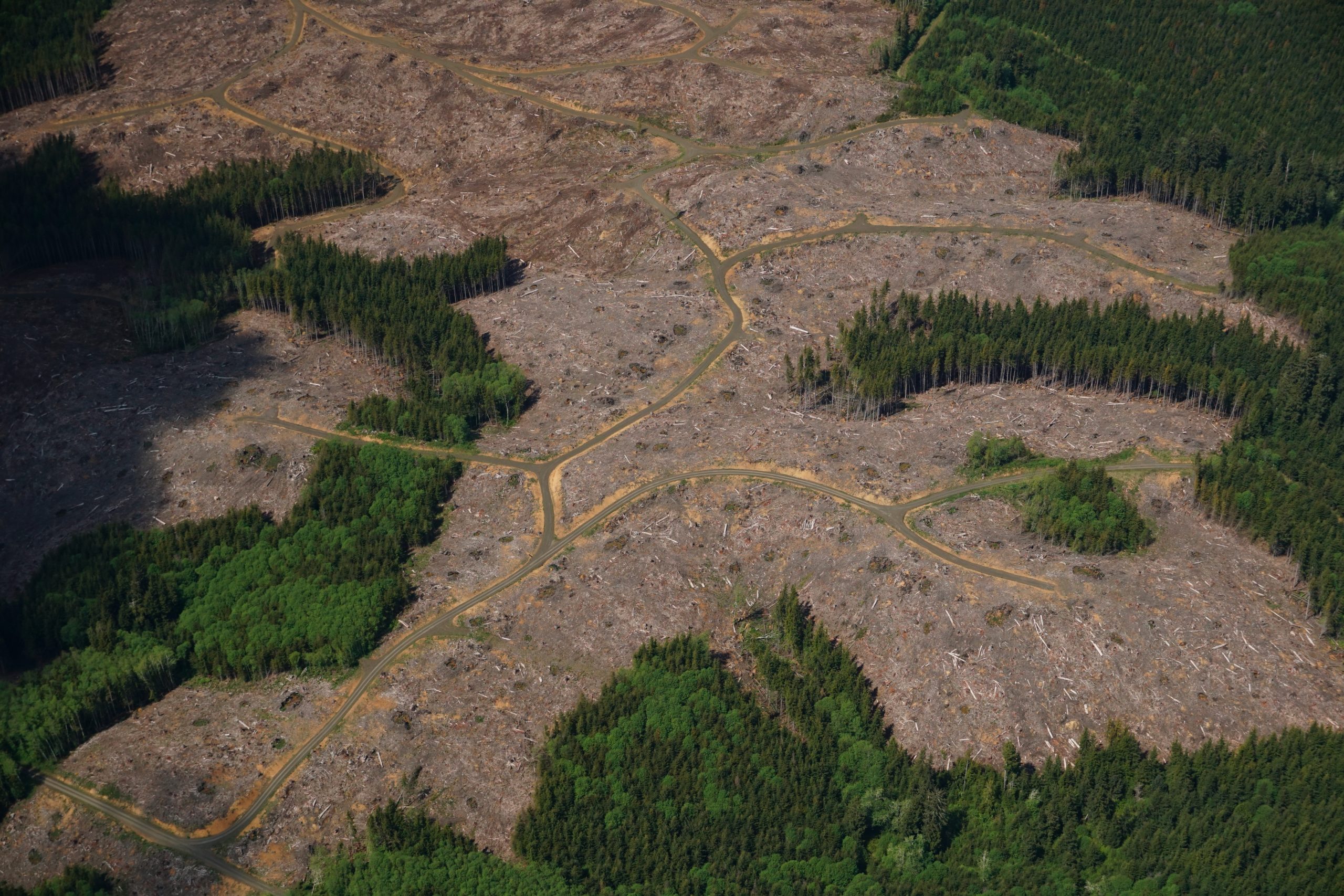ON THE WING
Spring 2025
FROM THE CEO
The Power of Perspective
At LightHawk, we believe in the power of aviation to advance conservation. Seeing the land from above gives us perspective on what’s happening, what’s at risk, and where we can make the greatest impact. That view helps our partners work smarter, move faster, and make more informed decisions for the places they’re working to protect.
This season, we’ve put that perspective to work in powerful ways. In Utah, we partnered with the University of Colorado-Boulder to fly law students over the Colorado Plateau, giving them a firsthand look at the complexity of managing natural resources in the West. In northern Idaho, we helped conservationists document snowmobile trespass in sensitive winter habitat for grizzlies and wolverines. These are remote areas that are nearly impossible to monitor from the ground. And in Washington, we supported efforts to protect native old-growth forests by flying over legacy stands that are quietly being lost to logging, even as their role in climate resilience and biodiversity grows more important by the day.
Each of these flights responds to a different conservation challenge, but all share a common thread: the unique value of aerial access in protecting land, water, and wildlife.
This month, we’re bringing back the 50 in 50 Challenge, an ambitious effort to fly 50 conservation missions in 50 days across the country. It’s a bold goal that reflects the scale of the challenges we face and the reach of our mission. We’ve seen what’s possible when the right people, tools, and perspectives come together, and we’re ready to take to the skies once again.
Thank you for standing with us. Your support makes every flight possible and every outcome stronger.

Jim Becker
CEO, LightHawk
50 In 50 Challenge Taking Flight Memorial Day Weekend

Starting May 26, LightHawk is launching the return of our 50 in 50 Challenge, flying 50 conservation missions in 50 days. This bold effort brings together people, projects, and places across North America through the unique and powerful perspective of flight.
Over the past few months, LightHawk program managers have been working with partners to identify conservation projects where flight can make a difference. With the help of our skilled volunteer pilots, we have been planning routes, aligning schedules, and finalizing the logistics needed to bring each mission to life. That coordination will continue throughout the challenge, but now it’s time to take to the skies!
From coast to coast, we will work with our partners to spotlight vital landscapes, waterways, oceans, and wildlife habitats. We will assist scientists with data collection, support restoration work, and fly policymakers and stakeholders who need a broader view to inform their decisions. We will bring awareness to threatened ecosystems, monitor protected areas, and help advance conservation outcomes where they are needed most.
This is conservation on a national scale, powered by flight and driven by collaboration. We will be sharing stories, photos, and flight updates along the way, and you can be part of the action. Follow the challenge and join our ground crew in supporting every mission. Visit
www.LightHawk.org/50-in-50 to learn more and be part of this powerful effort from above.
FEATURED MISSION
Teaching the Next Generation About Landscape Conservation
How do you teach law students about complex natural resource issues across the Colorado Plateau? You take them to the skies.
Conservation work protects the environment we depend on today and lays the foundation for future generations. To carry that work forward, the next generation of legal and policy professionals needs a clear understanding of where we stand, what we’ve accomplished, and what challenges remain. The missions we fly help deepen that understanding and inspire new voices to join the effort.
LightHawk collaborated with the University of Colorado, Boulder to support an advanced natural resources field seminar focused on the Colorado Plateau. Together, we organized flights for 12 law students and their professor to explore the region’s unique landscapes from the air. These flights offered a powerful aerial perspective to complement their legal studies and ground-based learning.
With federally protected lands under threat, helping the next generation experience the splendor and diversity of places like Bears Ears National Monument has never been more important. From above, the students explored Bears Ears, traced the paths of the Colorado and Green Rivers, and observed the La Sal mine complex in Utah—seeing firsthand how natural systems, cultural heritage, and industrial activity intersect across the region. These are perspectives they couldn’t gain from the ground.
The experience gave students new insight into the lands and legal frameworks they are studying and left a lasting impression as they continue their education and prepare for careers in law and natural resource policy. As student Jamie Browning shared, “We were trying to learn more about the Colorado Plateau landscape, and this flight put everything into spatial perspective in a way that maps could never do. It was incredible!”
This is how tomorrow’s changemakers learn the power of perspective—thinking across scales, jurisdictions, and ecosystems to understand how laws and natural systems are connected. Experiences like this help shape better advocates, policymakers, and stewards of the landscapes they’ll one day help protect.
We extend a special thank you to our volunteer pilots, Ross Rice and Steve Meyer, for making this mission possible. Coordinating multiple flights in one day with multiple pilots is a unique capability of LightHawk, made possible by the dedication and generosity of our volunteer pilot community.

Planes head to the runway before taking off with students from the University of Colorado-Boulder. Photo by Jamie Browning.

Students received an unparalleled view of the Colorado Plateau during their LightHawk flights. Photo by Jamie Browning.

Students enjoy a unique experience only LightHawk can provide. Photo by Jamie Browning.
PARTNER SPOTLIGHT
Protecting Idaho’s Ecosystems with the Inland Empire Task Force
The Inland Empire Task Force in Idaho is dedicated to protecting the state’s natural ecosystems, particularly in the northern regions. Founded by Priest River resident Paul Sieracki, the task force emphasizes the preservation of biodiversity, old-growth forests, and cold-water streams.
Mission and Activities
The Inland Empire Task Force takes part in environmental advocacy and legal actions to safeguard public lands. For instance, the group was among several conservation organizations that submitted a Notice of Intent to sue the U.S. Forest Service over the Kaniksu Over-Snow Vehicle Use Designation Project, expressing concerns about its potential impact on sensitive habitats in the Idaho Panhandle National Forests. Their flights with LightHawk have helped document these impacts.
Additionally, the task force participates in collaborative efforts aimed at sustainable land management. It is a member of the Priest River Watershed Group, a coalition comprising local stakeholders, tribes, and conservation organizations working together to address watershed health and land use planning in the region.
The task force aims to ensure the long-term preservation of Idaho’s natural resources and biodiversity.
CLIMATE CORNER
A Flight Over Washington’s Living Heritage

Old-growth forests store carbon, helping mitigate climate change. The logging of these forests limits our ability to store carbon and slow global warming. Photo by Legacy Forest Defense Coalition.
Southwestern Washington is home to native “legacy” forests — old-growth ecosystems that play a critical role in climate resilience. Some of these forests are more than a century old and provide essential habitat for sensitive and endangered wildlife. These unique low-elevation remnants, found along Washington’s coast and throughout the Puget Sound region, store large amounts of carbon, support biodiversity, and help regulate water quality across the landscape.
In recent years, these native forests have drawn increased attention from conservation groups, researchers, and communities concerned about their long-term future. In May, LightHawk partnered with the Legacy Forest Defense Coalition to capture aerial imagery of these landscapes, along with nearby areas impacted by active logging. LFDC is working to identify, document, and photograph high-priority legacy forests currently at risk across western Washington.
The flight covered both public and private lands, offering a broader view of how land use is changing across areas that include remaining old-growth and legacy forests. Many of these forests are in remote, hard-to-access areas, often without nearby roads or trails. Without visibility, their loss can go unnoticed. LightHawk provides aerial access for photographers and videographers to document hidden landscapes like these, capturing images of places the public might otherwise never see.
Flights like this are part of LightHawk’s ongoing effort to help partners visualize environmental change, monitor climate-related impacts, and support informed decision-making.
By taking to the air, LightHawk helps shine a light on what’s at stake, making the invisible visible. Our flights don’t just capture images; they create opportunities for action. When communities, decision-makers, and the public can see the full picture, they are better equipped to speak up, step in, and safeguard what remains. As legacy forests face growing threats, our view from above helps keep their future in focus.
